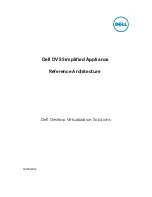
The ColdFusion Sample Application
|
67
server then sends the page to the browser for display. A ColdFusion script, or
template, essentially is a standard HTML file that includes extra tags written
in ColdFusion’s server-side markup language, CFML (ColdFusion Markup
Language). CFML tags are case-insensitive, begin with the letters
cf,
and
direct ColdFusion to process either a calculation or a query. The tags also can
identify a data source and describe how to manipulate or display information
in that data source.
Understanding ColdFusion Tags
The following table describes the ColdFusion tags and the actions that the
ColdFusion Server takes on reading the tags in the sample application:
To build your own Autodesk MapGuide LiteView application, you can
modify the ColdFusion templates that are part of the sample application. The
templates encode the map and feature_info requests to Autodesk MapGuide
LiteView. The following excerpt from
map.cfm
encodes the map request, for
example:
<cfset maprequest =
"http://" & server & "/servlet/MapGuideLiteView?
REQUEST = MAP &
FORMAT = PNG &
HEIGHT = " & height &
"&WIDTH = " & width &
"&LAYERS = " & mapName &
"&BBOX = " & bbox>
Note
The
server
variable must include the web-server name and context path.
For a default
Autodesk MapGuide
LiteView installation,
server
is “local-
host:8080/liteview6.5”, for example. For general information about request syn-
tax, see “Formatting a map Request” on page 11.
The templates also control the appearance, toolbar functions, and other
aspects of the application.
Tag
ColdFusion Server Action
cf***
Processes the script that is embedded in the page into HTML.
cfoutput
Inserts the value enclosed by the tag’s begin and end elements
in the map request. For example:
<cfoutput>#variable#</cfoutput>
cfset
Sets the bounding-box parameter of the map request.















































